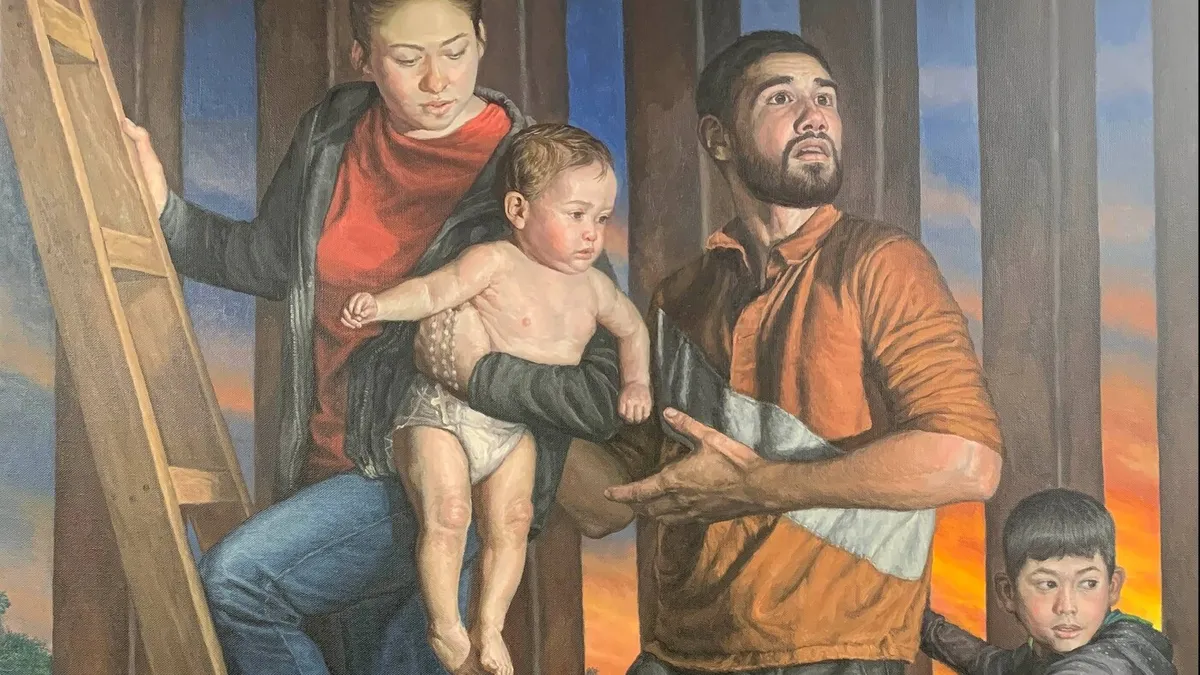
The official White House newsletter has published an article titled President Trump Is Right About the Smithsonian, which critiques various artworks, exhibitions, programs, and online content presented by the Smithsonian Institution. This review specifically targets pieces that address themes of race, slavery, immigration, and sexuality. Notable institutions mentioned include the Smithsonian's National Museum of African American History and Culture, the National Portrait Gallery, and the National Museum of the American Latino.
The publication of this article follows a recent letter from White House officials requesting eight of the Smithsonian's museums to submit current and future plans for their exhibitions and social media content. The Smithsonian's director, Lonnie Bunch, was informed that the institution has 120 days to comply with what the administration describes as a comprehensive review. This initiative aims to align the Smithsonian’s content with Trump’s cultural directives in anticipation of the country’s 250th anniversary celebrations.
The administration has instructed museums to replace what they consider divisive or ideologically driven language with descriptions that are historically accurate and unifying. NPR reached out to the White House for comments regarding the article’s claims about Smithsonian artists, but there has been no response.
The content highlighted in the White House newsletter appears to draw from a recent article in The Federalist, which labeled the Smithsonian's National Museum of American History as filled with "anti-American propaganda." The Smithsonian's press office has declined to comment on the White House's list, although it previously stated its commitment to maintaining independence from political influences. Artists and scholars interviewed by NPR expressed concerns about being further targeted, yet some view the White House's attention as a badge of honor.
Among the artists mentioned in the White House newsletter is Rigoberto A. Gonzalez, whose 2020 painting, Refugees Crossing the Border Wall into South Texas, was a finalist for The National Portrait Gallery in 2022. The artwork depicts an immigrant family navigating the dangers they face after crossing the U.S.-Mexico border. Gonzalez emphasizes that his painting is not a promotion of illegal border crossing but rather a reflection of reality.
Gonzalez, who was born in Tijuana and is now a U.S. citizen, expressed initial shock at being listed by the White House but later felt a sense of pride, stating, "My work is political, and that painting in particular was questioning the anti-immigrant sentiment of the time." He draws parallels to the degenerate art exhibitions of 1930s Germany, suggesting that the current administration aims to suppress artistic expressions that contradict its agenda.
Another figure featured is Ibram X. Kendi, a Howard University history professor and the author of How to be an Anti-Racist. Kendi has been labeled a "hardcore woke activist" in the White House newsletter. He argues that this characterization seeks to undermine his scholarly work on racism and distract from its importance. Kendi believes the administration's stance represents a broader attempt to suppress discussions on racism and its historical context in America.
Kendi likens the current political climate to the Jim Crow era, wherein leaders sought to distort the historical narrative of slavery and civil rights. He states that his work has made him a target over the years, particularly in the last five, as the White House tries to delegitimize his research among its supporters.
Artist Amy Sherald, known for her portrait of former First Lady Michelle Obama, recently canceled an exhibition at the Smithsonian's National Portrait Gallery. Her body of work, including a piece titled Trans Forming Liberty, engages with themes of identity and representation. Sherald has voiced concerns about the erasure of narratives in the current political climate, stating, "Every portrait that I make is a counterterrorist attack to counter some kind of attack on American history."
Similarly, artist Hugo Crosthwaite created a study of Dr. Anthony Fauci, which was commissioned by the National Portrait Gallery. Crosthwaite’s work has drawn attention due to its political implications related to public health and vaccination. He expressed that the White House's focus on his work may stem from its association with a figure who promoted vaccine technology amidst a highly polarized political environment.
Brooklyn-based artist Patricia Cronin has also raised alarms about the potential for censorship following the White House's scrutiny of the Smithsonian. Her bronze sculpture, Memorial to a Marriage, which depicts an embrace between two women, is part of the National Portrait Gallery's permanent collection. Cronin fears that the administration's actions could lead to a broader silencing of diverse voices in the arts.
Art historian Richard Meyers, a professor at Stanford University, expressed bewilderment at the current political climate surrounding art institutions. He noted that the call for a review of the Smithsonian resembles tactics from McCarthyism, raising questions about the potential removal of artworks and the implications of such censorship.
As concerns grow over self-censorship among artists, many fear that the current atmosphere could stifle creativity and expression. Meyers points out that the backlash against artistic censorship often sparks new discussions and reactions, which could lead to a resurgence of art that challenges the status quo. However, the fear of being targeted may lead emerging artists to suppress their voices, posing a significant threat to the vibrancy of American art.
In this politically charged environment, the role of artists becomes increasingly critical as they navigate the complexities of their work in a climate that often seeks to undermine diverse narratives. The ongoing discourse surrounding the Smithsonian and the broader implications for the art community will undoubtedly continue to evolve as these issues unfold.